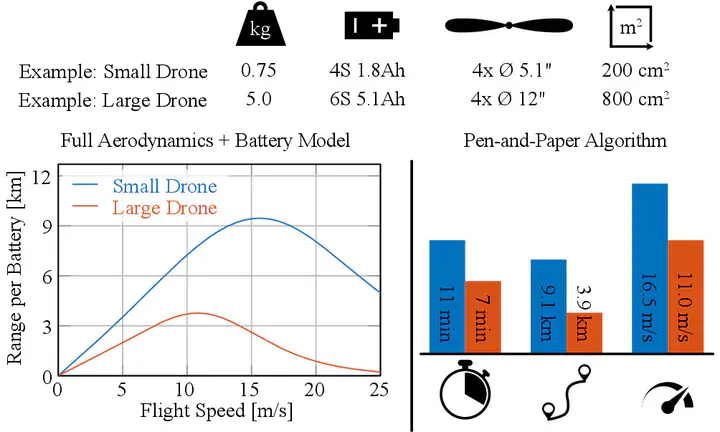
Abstract
Multicopters are among the most versatile mobile robots. Their applications range from inspection and mapping tasks to providing vital reconnaissance in disaster zones and to package delivery. The range, endurance, and speed a multirotor vehicle can achieve while performing its task is a decisive factor not only for vehicle design and mission planning, but also for policy makers deciding on the rules and regulations for aerial robots. To the best of the authors’ knowledge, this work proposes the first approach to estimate the range, endurance, and optimal flight speed for a wide variety of multicopters. This advance is made possible by combining a state-of-the-art first-principles aerodynamic multicopter model based on blade-element-momentum theory with an electric-motor model and a graybox battery model. This model predicts the cell voltage with only 1.3% relative error (43.1 mV), even if the battery is subjected to non-constant discharge rates. Our approach is validated with real-world experiments on a test bench as well as with flights at speeds up to 65 km/h in one of the world’s largest motion-capture systems. We also present an accurate pen-and-paper algorithm to estimate the range, endurance and optimal speed of multicopters to help future researchers build drones with maximal range and endurance, ensuring that future multirotor vehicles are even more versatile.